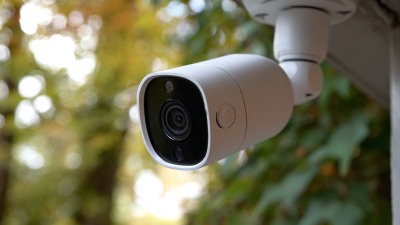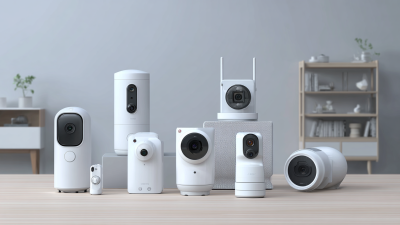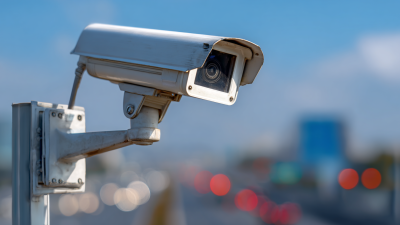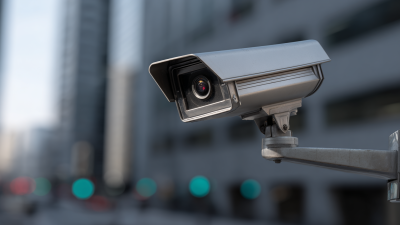
In an era where home safety is increasingly paramount, Wifi cameras are revolutionizing the way we perceive and implement security measures. According to the latest industry report from MarketsandMarkets, the global video surveillance market is projected to grow from $45.5 billion in 2020 to $74.6 billion by 2025, largely driven by the widespread adoption of smart home technologies, including Wifi cameras. These innovative devices not only provide real-time surveillance but also integrate seamlessly with other smart home systems, enhancing overall security and convenience. With features such as remote access, motion detection, and cloud storage, Wifi cameras empower homeowners to monitor their properties from anywhere, significantly improving response times and peace of mind. As crime rates fluctuate and personal safety concerns rise, the integration of Wifi camera technology into home security systems is not just a trend, but a critical component of future-proofing our living spaces against potential threats.

WiFi cameras have revolutionized the way homeowners approach security. By integrating wireless technology into home monitoring systems, these cameras allow for real-time surveillance from virtually anywhere. This mobility enhances the overall effectiveness of home security, enabling users to stay connected to their properties through mobile devices. Through intuitive apps, homeowners can receive instant alerts and view live feeds, allowing for prompt actions in the event of suspicious activities.
Moreover, WiFi cameras often come equipped with advanced features such as motion detection, night vision, and two-way audio, which further bolster their functionality. These innovations not only increase the deterrence effect against potential intruders but also offer the ability to interact with visitors remotely. By merging accessibility with advanced technology, WiFi cameras are not just tools for monitoring; they are integral components of a modern, comprehensive home security strategy. As these technologies continue to evolve, they promise even greater enhancements in safety and peace of mind for homeowners.
When selecting the right WiFi camera for your home, several factors come into play to ensure maximum safety and convenience. Firstly, consider the camera's resolution; a higher resolution provides clearer images, which is crucial for identifying faces or details in any suspicious activities. Look for cameras that offer at least 1080p HD video quality. Additionally, night vision capabilities are essential for monitoring your property during low-light conditions, so opt for models with infrared technology.
Another crucial aspect is the camera's field of view. Cameras with wider angles can cover more area, reducing the number of cameras needed to secure your home. Furthermore, integration with smart home systems is an essential consideration. Choose cameras that are compatible with devices like smart assistants or home automation setups, enabling you to control and monitor your security system effortlessly. Lastly, pay attention to the storage options available, whether it’s cloud-based or local storage, as this will determine how and where your footage is saved.
| Camera Type | Resolution | Field of View | Night Vision Range | Audio Capability | Price Range |
|---|---|---|---|---|---|
| Dome Camera | 1080p | 90 degrees | 30 feet | Two-way audio | $100 - $150 |
| Bullet Camera | 4MP | 70 degrees | 40 feet | No audio | $120 - $200 |
| PTZ Camera | 1080p | 360 degrees | 50 feet | Two-way audio | $300 - $500 |
| Indoor Camera | 720p | 120 degrees | 20 feet | Two-way audio | $50 - $100 |
As home security systems evolve, setting up your Wi-Fi camera for maximum coverage is crucial in enhancing your home's safety. According to a report by MarketsandMarkets, the global video surveillance market is projected to reach $62 billion by 2023, driven largely by advancements in wireless camera technology. Proper camera placement can significantly impact the effectiveness of your surveillance system. Ideally, cameras should be installed at entry points such as doors and windows, with a clear view of common areas, ensuring no blind spots.

When configuring your Wi-Fi cameras, consider the optimal height and angle for capturing detailed footage. The Security Industry Association suggests placing cameras at a height of 8-10 feet to reduce the risk of tampering while still maintaining visibility. Additionally, utilizing a wide-angle lens can help cover larger areas, reducing the number of cameras needed. For optimal performance, ensure that your Wi-Fi signal is strong in the areas where the cameras are installed. Using a signal booster or mesh Wi-Fi system can enhance connectivity and prevent disruptions. With the right setup, Wi-Fi cameras can provide unparalleled peace of mind, transforming your home security into a robust and responsive system.
The integration of Wi-Fi cameras with smart home devices is transforming the landscape of home security, providing users with unprecedented control and connectivity. By combining advanced surveillance technology with smart automation, homeowners can now monitor their properties in real-time from anywhere, utilizing intuitive applications to set routines and react efficiently to potential threats. According to industry reports, the global smart home security market is projected to reach $121 billion by 2025, underscoring the demand for integrated security systems that enhance safety while simplifying user experience.
To maximize the effectiveness of your smart home security setup, consider these tips: First, ensure that all your devices, including Wi-Fi cameras, are compatible with your central smart home hub. Compatibility is crucial for seamless integration; for instance, certain cameras can connect effortlessly with popular smart home platforms, providing comprehensive coverage and management options. Second, take full advantage of automation features by setting your Wi-Fi cameras to send instant alerts to your smartphone, allowing you to respond quickly to security breaches. Lastly, regularly update your device firmware to safeguard against vulnerabilities, ensuring that your smart home security system remains robust and efficient.
The advancements in Wi-Fi camera technology also include AI capabilities that enhance security functions. Many systems now feature intelligent motion detection and facial recognition, significantly reducing false alarms while improving monitoring accuracy. These innovations are not just enhancing safety but are also paving the way for a more interconnected and responsive home environment, illustrating the profound impact of Wi-Fi cameras on contemporary home security strategies.
The advancement of technology has transformed home security systems, with WiFi cameras leading the charge. These devices offer homeowners unprecedented convenience and monitoring capabilities. However, along with these benefits, there also arise significant concerns regarding privacy and security. To protect yourself while enjoying the advantages of WiFi cameras, following certain best practices is essential.
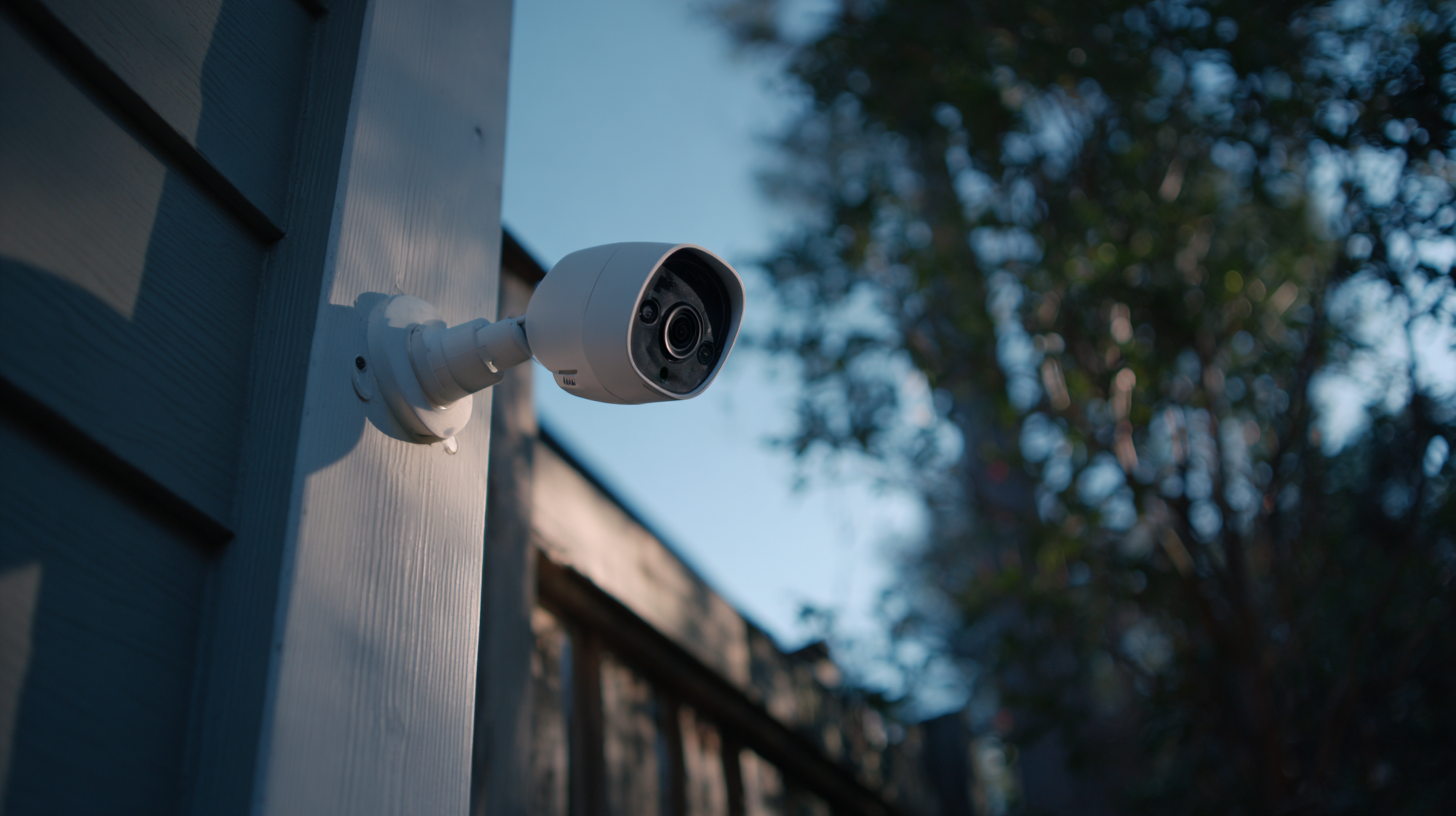
First, always change the default login credentials of your WiFi camera. Many devices come with factory-set usernames and passwords that are commonly known and can be exploited by hackers. By setting a unique password comprised of a mix of letters, numbers, and symbols, you greatly enhance your security. Additionally, enable two-factor authentication if your camera supports it, adding an extra layer of protection to your security system.
Another crucial tip is to regularly update the firmware of your WiFi cameras. Manufacturers often release updates to fix vulnerabilities and improve performance. Keeping your firmware up-to-date ensures that your devices are equipped with the latest security features. Furthermore, consider using a separate network for your smart devices, isolating them from your main home network. This strategy enhances safety by minimizing the risk that a breach of one device could lead to access to more sensitive information on other devices.
